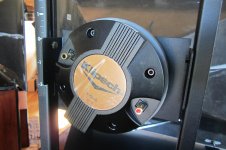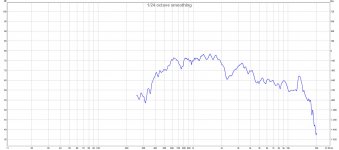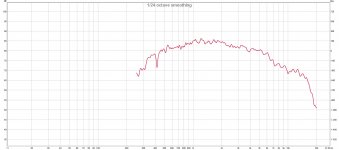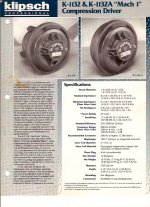Boldname,
I agree, just because you are using Be does not guarantee that you will have a satisfactory final result. I won't say the name, you can figure it out, but one of the very well known Be dome tweeters, has an inverted dome, has all the same problems that every previous version has had. It isn't the dome material that is the problem or the solution but it sells product. I am also personally working on a Be designed dome tweeter, whether it will be what I expect is a question, I won't know until it is completely tested. I may just end up going back to a soft dome design if it doesn't truly bring something to the party, the raw dome material cost more than the entire assembly of some of the most expensive dome tweeters on the market. final sales prices can have nothing to do with the actual cost to manufacture a device. Marketing and price fall hand in hand in most cases.
I know the Radian drivers fairly well as I have used them in the past and a friend and mentor I first met at Radian when I was looking to work with a company on some earlier designs was an engineer at that company now many years ago. The stories I could tell of some of the shenanigans that have happened out of that company, probably the same at many other audio companies. I do know where the original designs originated, I have been told that story more than once. it was not originally from Radian, all of this goes back to Rankus Heinz, the real original source of all these drivers. It was a clash of personalities that created the three different companies making these drivers, Rankus, Emilar and Radian. The rest in now just history.
The history is always interesting as it can for one thing throw light on the route by which a product took off, not necessarily as an open research of all the options and selecting just one or two. But it was so natural to look at Mag, Ti and Be. Aerospace though, has a tendency to select thousands of combinations and come up with a suitable material which is still cost effective. The suspension is perhaps the more pressing problem to keep up with the Be and the avoidance of having to use ferrofluid
One of the tricks I remember from working with the Radian drivers was punching holes in the surround to loosen them up. I won't try and remember the number of holes or hole size but it was a trick to tuning those diaphragms. The lower in frequency you try and push those designs the more the stiffness of the Mylar comes into play, at the same time you have to make sure the horn is loading the device and that you don't start hitting the back of the phase plug. The more I talk about getting compression drivers to sound their best the more I remember how much trouble they really can be.
I replaced the driver in Klipsch K-402 horn with JBL 2446 with Truextent Be.
I don't know what the original driver in K-402 is. Does anybody know? Klipsch call it K-69.
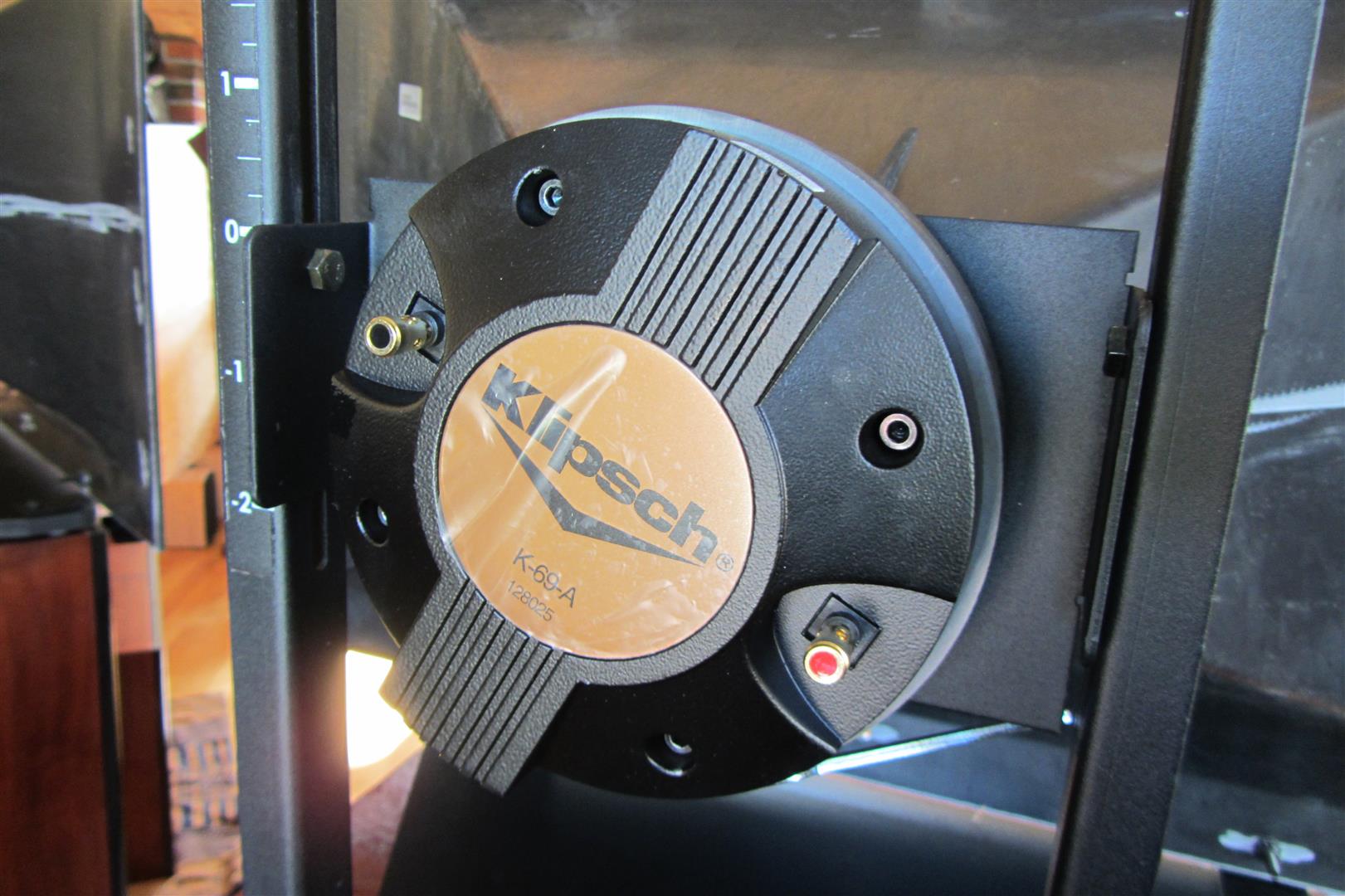
Measurement with the K-69 driver without EQ:
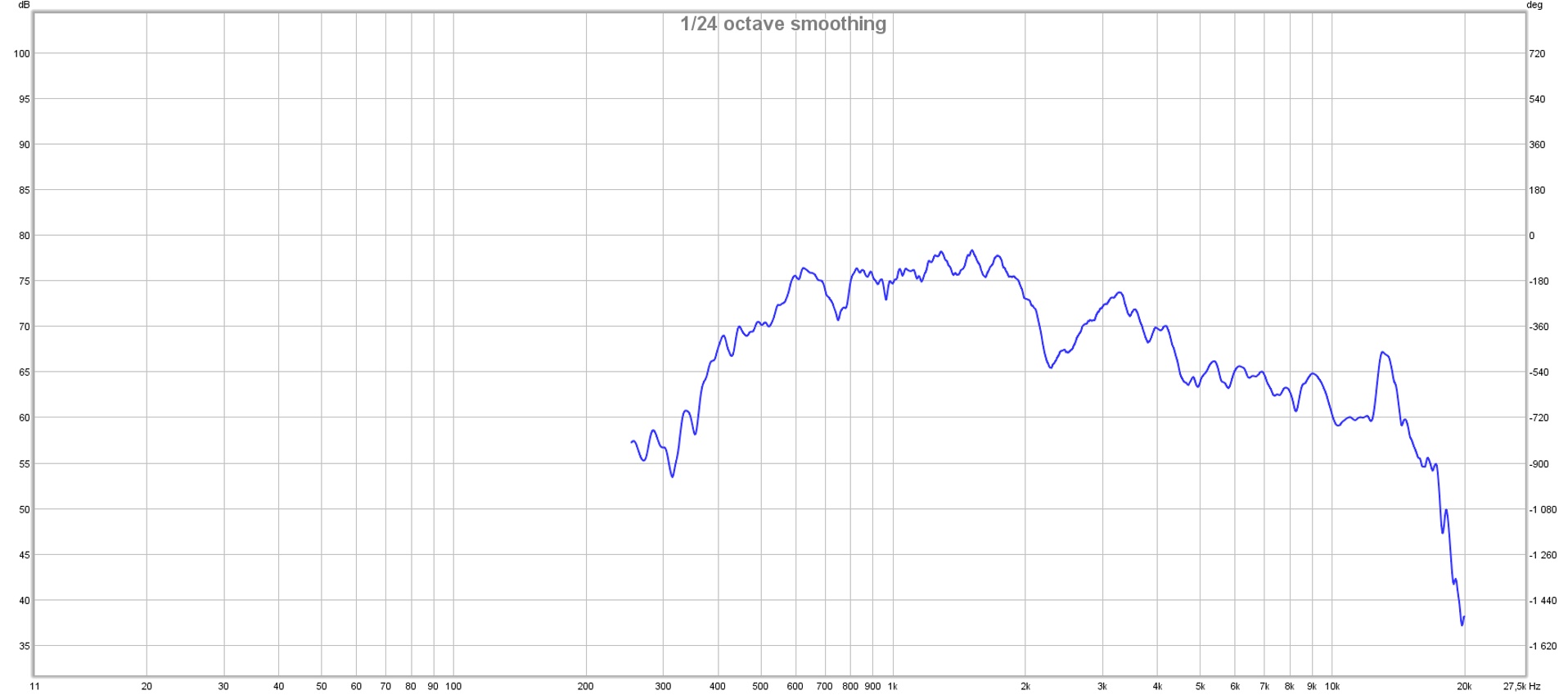
Measurement with JBL 2446 with Truextent Be without EQ (higher level):
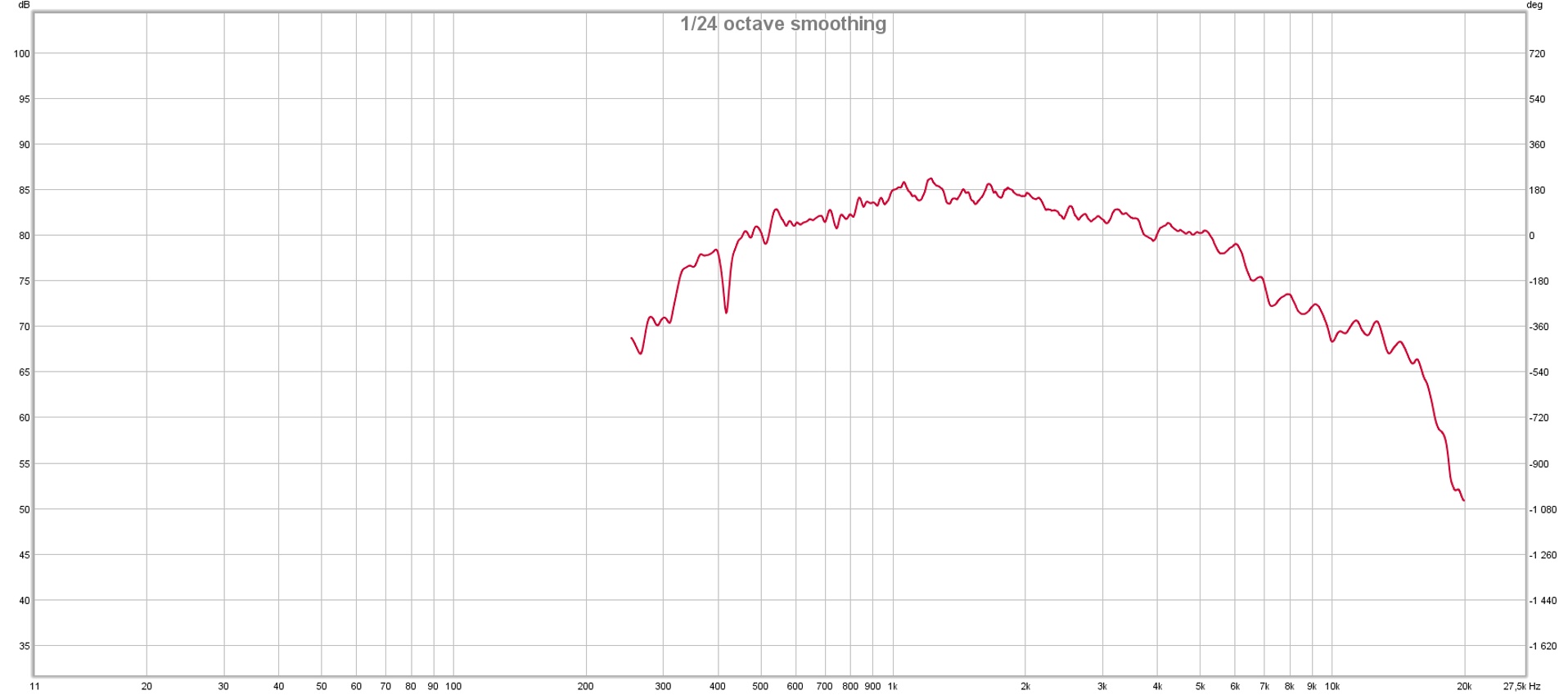
I wasn't able to do a proper AB test but I felt the 2246 Be sounded smoother and less fatiguing for longer listening periods. Not a huge difference though when EQ is applied.
I don't know what the original driver in K-402 is. Does anybody know? Klipsch call it K-69.
Measurement with the K-69 driver without EQ:
Measurement with JBL 2446 with Truextent Be without EQ (higher level):
I wasn't able to do a proper AB test but I felt the 2246 Be sounded smoother and less fatiguing for longer listening periods. Not a huge difference though when EQ is applied.
Attachments
I think a 1" driver will reach higher but I don't think that Radian has made one with a Be diaphragm and perhaps they won't.
I have a pair.
I replaced the driver in Klipsch K-402 horn with JBL 2446 with Truextent Be.
I don't know what the original driver in K-402 is. Does anybody know? Klipsch call it K-69.

Measurement with the K-69 driver without EQ:

Measurement with JBL 2446 with Truextent Be without EQ (higher level):

I wasn't able to do a proper AB test but I felt the 2246 Be sounded smoother and less fatiguing for longer listening periods. Not a huge difference though when EQ is applied.
Good to se these graphs.
The EQ can clean up the treble, but it can also lose some subtle treble information, whether DSP or passive. The differences w/o EQ II see around 16KHz would possibly be somewhat significant to me on a transparent system on quality music with treble emphasis. But the notch around 2KHz is telling us something plus the rougher FR in general
Last edited:
I believe the driver you posted a picture of is a P-
Audio device re branded for Klipsch. The stock driver for the K402 is the K1132. I am sure you can find more info at the Klipsch site. Hope these are of interest.
The story of Klipsch KPT-904 - 2-Channel Home Audio - The Klipsch Audio Community
K69 on 402 or 510 and why? - Klipsch Pro Audio - The Klipsch Audio Community
Klipsch Jubilee Crossover Network - AudioKarma.org Home Audio Stereo Discussion Forums
K69 compared to TAD 4002 - Technical/Modifications - The Klipsch Audio Community
K-1132......... - Technical/Modifications - The Klipsch Audio Community
https://community.klipsch.com/index.php?/topic/118116-the-2010-picky-reportpage-18
http://www.klipsch.com/kpt-535-t K1133 used for max mid performance K1132 used for max hi freq extension
https://community.klipsch.com/index.php?/topic/147114-how-good-are-the-jubilees-today/
Audio device re branded for Klipsch. The stock driver for the K402 is the K1132. I am sure you can find more info at the Klipsch site. Hope these are of interest.
The story of Klipsch KPT-904 - 2-Channel Home Audio - The Klipsch Audio Community
K69 on 402 or 510 and why? - Klipsch Pro Audio - The Klipsch Audio Community
Klipsch Jubilee Crossover Network - AudioKarma.org Home Audio Stereo Discussion Forums
K69 compared to TAD 4002 - Technical/Modifications - The Klipsch Audio Community
K-1132......... - Technical/Modifications - The Klipsch Audio Community
https://community.klipsch.com/index.php?/topic/118116-the-2010-picky-reportpage-18
http://www.klipsch.com/kpt-535-t K1133 used for max mid performance K1132 used for max hi freq extension
https://community.klipsch.com/index.php?/topic/147114-how-good-are-the-jubilees-today/
Attachments
Last edited:
- Status
- This old topic is closed. If you want to reopen this topic, contact a moderator using the "Report Post" button.
- Home
- Loudspeakers
- Multi-Way
- Truextent Beryllium replacement diaphragms
